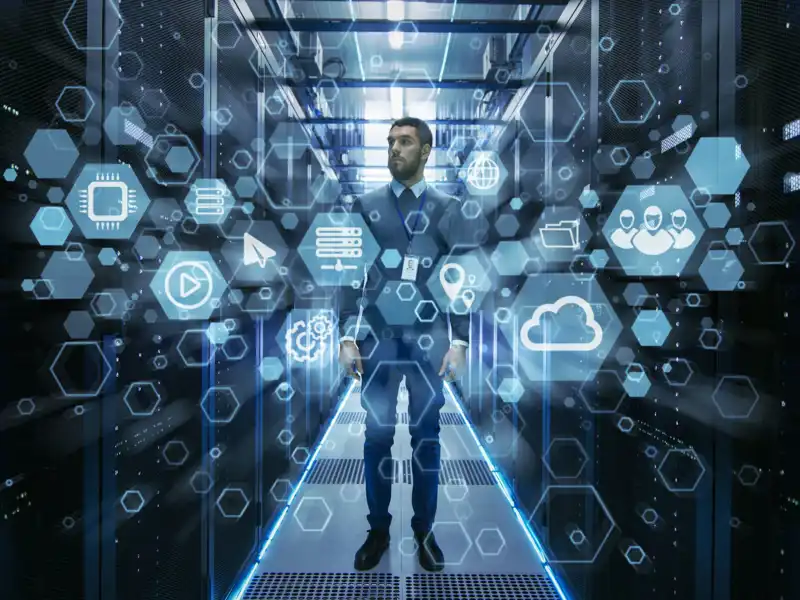
Unlike traditional professional development programs, today’s environment requires a completely new approach — one that prioritizes continuous learning, adaptability and the ability to integrate new technologies into existing workflows.
Modern employee development must go beyond basic training to foster a culture of sustained growth and learning. This requires forward-thinking organizations to proactively equip their teams with both technical competencies and human-centered skills, ensuring they remain relevant and resilient amid technological shifts.
The AI Era and Workforce Transformation
The rapid advancements in artificial intelligence (AI) have ushered in both unique opportunities and complex challenges in the workplace. From algorithmic bias to data privacy and security, organizations are navigating the implications of this technology with increasing urgency. The release of ChatGPT on November 30, 2022, marked a turning point — elevating AI from an abstraction to a must-have technology. Despite this, many businesses are still figuring out how to integrate AI into their strategic planning, operational workflows and competitive positioning.
With about half of workers concerned about AI’s impact on their future and 32% believing that it will reduce job opportunities in the long run 1, these anxieties underscore the growing need for proactive upskilling and employee development. As AI-driven automation reshapes job roles and eliminates routine tasks, employees and organizations alike must adapt by developing skills that complement – rather than compete with – artificial intelligence.
A Dual-Focus Approach to Employee Development
Organizations must embrace a two-pronged strategy to equip their workforce with the skills necessary to thrive in an AI-driven world:
Technical Proficiency
Employees need skills to effectively use emerging technologies, including AI-powered tools and digital platforms. Even traditionally non-technical roles increasingly require digital literacy and a foundational understanding of AI.
Human-Centered Skills
As automation takes over repetitive tasks, uniquely human abilities become even more valuable. These include creative thinking, complex problem-solving, emotional intelligence, interpersonal communication and adaptability in the face of change.
Organizations that prioritize comprehensive employee development don’t just future-proof their workforce; they also enhance engagement, improve retention and build long-term resilience.
This dual focus is essential because while technical proficiency enables employees to leverage AI effectively, human-centered skills ensure they can apply critical thinking, creativity and emotional intelligence in ways that machines cannot replicate.
Building an Effective Employee Development Framework
A successful employee development program requires thoughtful collaboration between leadership, learning professionals and individual employees. The goal is to create personalized growth opportunities that leverage existing strengths while addressing skill gaps.
1. Conduct a Comprehensive Skills Assessment
Before implementing training programs, organizations must first understand their current capabilities and future needs:
- Skills Inventory: Document employees’ existing talents, identifying both technical proficiencies and human capabilities.
- Future Needs Analysis: Work with leadership to anticipate emerging skill requirements based on strategic goals, industry trends and technological advancements.
- Talent Pipeline Planning: Identify potential skill shortages and develop internal pathways to fill high-demand roles through structured development programs.
This assessment provides a foundation for targeted upskilling initiatives that align with both business objectives and employees’ career aspirations.
2. Create Individualized Development Plans
Learning is most effective when it connects to meaningful outcomes for both the organization and the individual:
- Align With Career Goals: Work with employees to design development paths that support their professional aspirations while addressing organizational needs.
- Contextualize Learning: Help employees understand how new skills enhance their current roles or prepare them for future opportunities.
- Leverage Existing Strengths: Use assessment results to build on employees’ natural abilities, making skill development more efficient and impactful.
A personalized approach increases employee engagement and boosts the effectiveness of development programs.
3. Empower Self-Directed Learning
The future workplace requires professionals who take ownership of their own growth. Organizations can foster this mindset by:
- Providing Self-Assessment Tools: Offer resources that help employees evaluate their skill levels and identify areas for improvement.
- Creating Learning Networks: Establish mentorship programs and peer communities where employees can share knowledge and support each other.
- Developing Skill Visibility Systems: Implement platforms where employees can showcase their expertise, express interest in new development opportunities, and find projects to apply newly acquired skills.
By embedding self-directed learning into company culture, organizations encourage employees to take an active role in their professional development.
4. Implement Flexible Learning Approaches
Not all skills are learned the same way, and employees have different preferences for acquiring new competencies. A dynamic approach includes:
- Diversified Learning Formats: Combine instructor-led workshops, digital learning platforms, experiential projects and simulations to cater to different learning styles.
- Just-in-Time Learning: Provide easily accessible, on-demand resources that employees can utilize in real time to address immediate skill gaps.
- Real-World Application: Facilitate cross-functional projects, stretch assignments and innovation challenges where employees can practice new skills in meaningful contexts.
A flexible, blended learning strategy ensures that professional development seamlessly integrates into daily work rather than competing for time and attention.
5. Foster a Culture of Continuous Development
Sustainable workforce development requires an environment where learning is a core organizational value:
- Lead by Example: Encourage executives and managers to actively engage in learning initiatives and share their own development journeys.
- Allocate Dedicated Resources: Provide protected time, funding and technology for employees to participate in ongoing learning.
- Recognize and Reward Growth: Celebrate skill acquisition through career advancement opportunities, formal recognition programs, and peer acknowledgments.
When development becomes ingrained in company culture, employees are more likely to embrace lifelong learning as a professional norm rather than a one-time obligation.
Upskilling for the Future
As AI and other technologies continue to transform the workplace, developing new skills will be essential for both individual career resilience and organizational success. A robust employee development program doesn’t just prepare the workforce for today’s challenges — it fosters an adaptable organization capable of thriving in any circumstance.
The businesses that will lead in the coming years won’t necessarily be the ones that predict the future with perfect accuracy. Instead, they will be the ones that cultivate the ability to evolve alongside it. By investing in employee development now, organizations can lay the foundation for sustainable success — no matter what technological changes emerge (we’re looking at you, quantum computing).
NFP is committed to helping organizations develop upskilling programs and employee development initiatives that create adaptable, future-ready workforces. Our Human Capital Solutions specialists work with companies across industries to design personalized upskilling frameworks tailored to your unique business needs and technological challenges. Contact us today to discuss how we can support your organization's journey toward sustainable success in the AI era.
Co-authored by Kim Moshlak, Helios HR and NFP Human Capital Solutions











